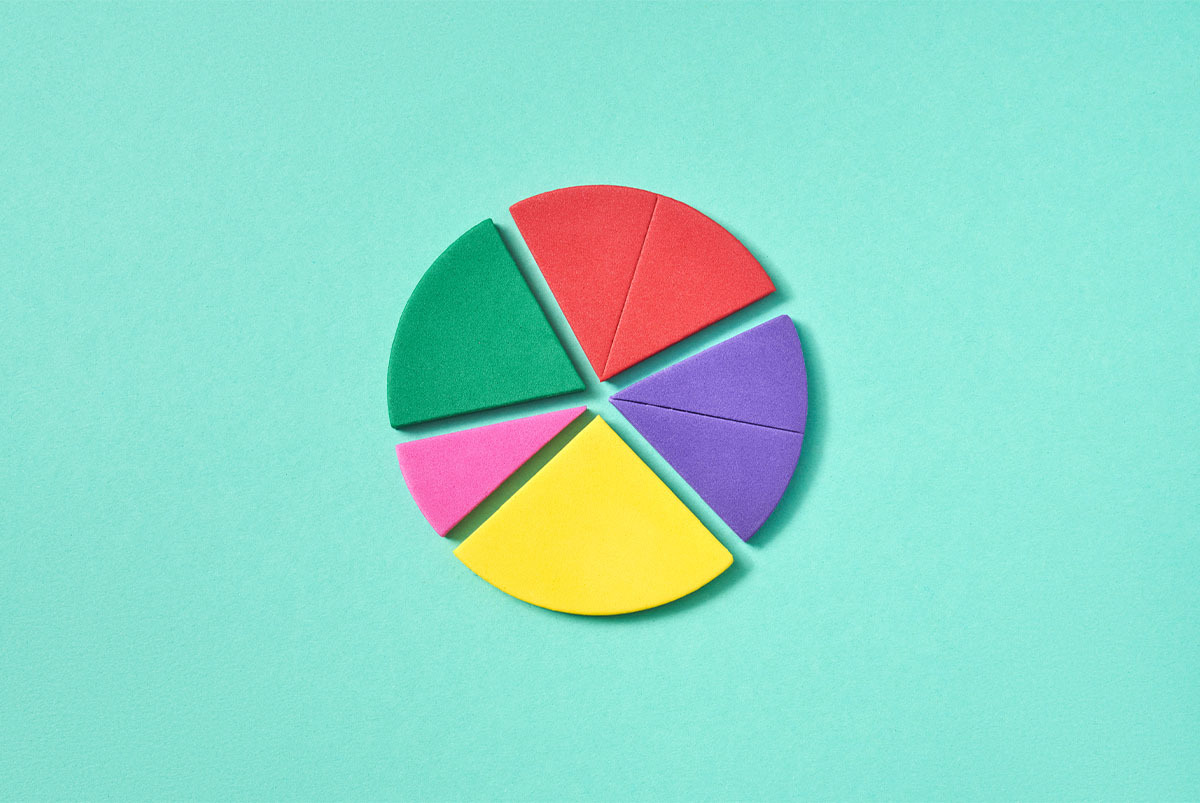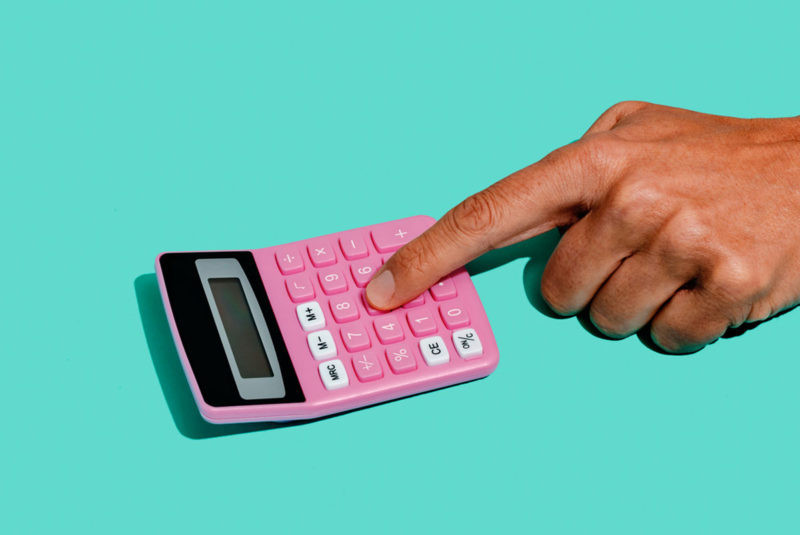Credit utilization is one of the most important factors in the calculation of credit scores. But many people don’t understand what it actually means.
In this article, we dive into the nitty-gritty of credit utilization. We’ll answer all your questions, including:
- What is credit utilization?
- How do you calculate credit utilization?
- How does credit utilization affect credit scores?
- How can you improve your credit utilization?
Here’s the big takeaway: The lower your credit utilization, the better it is for your credit scores.
But there’s more to credit utilization than that, and we’ve got some tips to help you keep your scores in top shape. In other words? Keep reading!
What Is Credit Utilization (Revolving Utilization)?
Credit utilization refers to the ratio between your total credit card balance and your total credit limit.
Say you have two credit cards, each with a limit of $5,000, making your total credit limit $10,000.
If you have a balance of $2,500 on one card and a $0 balance on the other, your total balance is $2,500 and your credit utilization ratio is 25%. Or, put another way, you’re using 25% of your total available credit.
Multiple credit cards can improve your utilization percentage.
How Do You Calculate Your Credit Utilization?
To determine your credit utilization, log in to each of your credit card accounts and gather the following information:
- Credit limit
- Current balance
Both of these numbers should be clearly marked on your credit card statement. Add up the credit limits across all your cards, then separately add up the balances, too.
Next, divide the total balance of all your credit cards combined by your total credit limit, and then multiply by 100 to get a percentage. That’s your overall credit utilization.
Here’s an example to drive it home:
| Balance | Credit Limit | |
| Card A | $800 | $1,000 |
| Card B | $2,000 | $5,000 |
| Card C | $3,000 | $10,000 |
| Total | $5,800 | $16,000 |
In this situation, your credit card utilization would be 36%. That isn’t terrible, but also isn’t great. When it comes to credit utilization, your goal is to get the percentage as low as possible.
The lower the percentage, the better for your credit scores.
Your per-card utilization rate matters too. Consider Card A: Its individual utilization rate is 80%! That’s not something lenders want to see, even if your overall utilization is low.
High utilization on an individual credit card isn’t good for your credit scores. Credit scoring models, like FICO® and VantageScore®, consider the utilization rate (a) on all your credit cards combined, and (b) on each card individually.
How Does Credit Utilization Affect Credit Scores?
When it comes to calculating your credit scores, credit utilization is one of the most important factors.
Let’s look at what goes into your credit scores, which just so happen to come from the most popular credit scoring agency.
As you may know, “amounts owed” accounts for 30% of your score, and credit utilization is one of the most important factors in that category.
Why? Credit scoring models evaluate behaviors on credit reports and figure out what actions make people more likely to pay their bills late. (The purpose of a credit score is to predict the likelihood you’ll pay a bill 90 days or more late within the next 24 months.) The numbers don’t lie. Statistics show that people who tap into a bigger percentage of their credit card limits are more likely to fall behind on their credit obligations.
What’s in Your Credit Score?
This chart shows the criteria used to create FICO® scores and their relative importance in your credit score.
Also, if you’re maxing out your credit cards, lenders might assume you can’t afford your lifestyle — and will therefore view you as a higher credit risk. But if you have good credit and a low credit utilization ratio, they’ll likely assume your spending is under control and that you’ll be a good borrower.
If you’re solid in other areas of your credit reports, with a record of on-time payments and no collection accounts, you might still earn decent credit scores in spite of high credit utilization.
But if you have a thin credit file with only one card open for, say, a year, your credit utilization ratio could significantly affect your credit scores.
The bottom line: If you want to achieve high credit scores, strive for the lowest credit utilization percentage possible.
The exception to “lower is better”
But don’t avoid your cards completely. Most credit scoring models view 1% utilization as better than 0%.
If you pay off your full balance early, before a statement is generated, your next statement will show a $0 balance. This is the number that will show up on your credit reports. But if only $0 balances are reported to credit bureaus, credit scoring models may eventually consider the account inactive.
We recommend paying your full statement balance between the time you get your statement and the due date. If you spend a lot one month and are concerned about high utilization, you could make a partial payment early, before the statement is generated.
However, if you’re preparing to apply for new financing, it can be a good idea to pay your full balance (or pay your balance down to 1% of the credit limit) before the statement closing date. You should do this for a couple of months in advance.
This should result in very low utilization on your credit reports and, quite possibly, a boost in your credit scores.
What’s the Best Credit Utilization Percentage?
You may have seen experts say you should keep your credit utilization “under 30%.” And while that advice is okay, it’s not perfect.
Lower utilization is generally better, with the slight exception that 1% is better than 0%. But each credit-scoring formula may treat utilization a little bit differently, and the resulting impact can vary from credit file to credit file based on various other factors at play.
Fair Issac Corporation® (FICO®)
Consider this: FICO®’s “High Score Achievers” — which refers to anyone with credit scores of 800 or higher — have an average credit utilization of around 4%, with 10% utilization marking about the highest a high-achieving account tends to go.
Younger account holders with scores above 800 tend to have a slightly higher maximum per-card utilization of around 12% and an overall average utilization of 5%.
Those with FICO® scores between 750 – 799, on the other hand, have an average high credit utilization of 25% (older files) or 13% (younger, thinner files), with total averages of about 10% and 6%, respectively.
While 25% is considerably higher than 12%, a credit score of 750 is still considered “very good,” and shouldn’t leave you struggling to secure solid loan rates or appealing credit card offers.
VantageScore®
VantageScore® takes a slightly different approach and actually supports the idea that anything below 30% should do the trick. But that recommendation comes with an important addendum:
“The optimal ratio always will be as close to zero percent as possible, but it’s still possible to have elite credit scores with higher ratios.”
Even if “close to zero” seems out of reach, work on lowering your credit utilization ratio — every bit helps. Lowering your utilization ratio by as little as 10% could potentially have a meaningful impact on your credit scores.
Do I Need To Maintain Low Utilization Every Billing Cycle?
Generally, the answer is no — the current numbers on your credit reports are what matter most. With many major credit scoring models in use today, utilization is based on the current balances and limits that show up on your credit reports when the score is calculated. Those numbers come from the balance and limit reported to the credit bureaus on your most recent credit card statement, not the current balance and limit on your account.
Most scoring models don’t consider the historical balances or credit limits and utilization over time. As long as you pay your full statement balance each month you can use your card for purchases up to the credit limit, avoid interest, and stay out of credit card debt.
If you don’t go too crazy with your credit card utilization (aka you keep it low), you’ll likely be able to build decent credit scores along the way.
If you’re planning to apply for credit and want to try to optimize your scores, you could pay all of your cards down to $0 and keep them there temporarily. Alternatively, you could change your card use habits and pay your full balance before the statement closing date to lower utilization. Either choice might help you boost your credit scores in the billing cycle before you apply for new credit.
There’s nothing wrong with always maintaining low utilization, though, especially if you’re someone who enjoys aiming for the highest credit scores possible. In the long term, it can be easy to maintain low utilization with regular credit limit increases.
High credit limits can help you åmaintain low utilization all the time, even if you spend thousands of dollars on cards every month (as long as you pay the balances off in full).
In some credit scoring models, historical utilization does matter to some degree. Newer credit scoring models, like VantageScore® 4.0, include what’s called trended data. For example, a trend of increasing balances relative to limits could lead to lower scores by showing that someone is building up credit card debt over time.
On the other hand, someone who’s utilization is decreasing over time can indicate someone who’s getting back on his or her feet financially by paying off debt.
Do Business Cards Count Toward Credit Utilization?
When you apply for a business credit card, the issuer will likely check your personal credit history and ask for a personal guarantee. Unless you’re applying for a corporate credit card, a personal guarantee on a business card is nearly impossible to avoid.
Your business credit card activities, however, won’t usually go on your personal credit reports, unless you miss a payment. That also means credit limits and balances on business credit cards usually won’t impact your personal credit utilization and credit scores.
You may even be able to use balance transfers to move credit card debt over to business cards. This might reduce your personal credit utilization and improve your credit scores. However, keep in mind that moving personal debt to a business card could potentially trigger bookkeeping and other challenges for your business. When you move debt from a personal card to a business card, you also no longer enjoy the protections of the CARD Act since that law only applies to personal credit cards.
Is It Better to Split a Balance Among Several Cards?
In an ideal world, you should aim to pay your credit card balances off in full every month. Yet even if you can’t afford to pay off your credit card balances in full, you can still be strategic about how you carry your outstanding debt.
Spreading your credit card balances out among several accounts typically isn’t a good move where your credit scores are concerned. Instead, it’s probably better to consolidate your revolving debt onto a single account.
Yes, you may increase the credit utilization ratio on that specific credit card, but the overall impact could be slightly better for your credit scores.
Here’s why.
- Credit scoring models like FICO® and VantageScore® consider revolving utilization in two ways — overall utilization and individual utilization.
- Your overall credit utilization (also called aggregate utilization) isn’t going to change whether you carry a large balance on one account or spread it out over several cards.
- You can lower the individual utilization ratios on some accounts by combining all your credit card debt together.
- Credit scoring models consider the number of accounts with balances (and the number of revolving accounts with balances) on your credit reports.
- Having fewer accounts with outstanding balances can be good for your credit scores.
7 Ways To Improve Your Credit Utilization Ratio
Aside from the obvious — paying off as much credit card debt as you can — you can try a few other ways to improve your credit utilization ratio:
1. Avoid closing credit cards
While it might seem prudent to close a credit card you’re not using, doing so will lower your available credit and increase your utilization. Unless a card has a high annual fee, we recommend keeping it open. (Take it out of your wallet or cut it up if you don’t want to use it.)
2. Request a credit limit increase
Improving your credit utilization could be as simple as making a phone call. Credit card issuers will often raise your credit limit if you ask, therefore increasing your available credit and lowering your utilization.
3. Make multiple payments each month
Issuers report your balances to the credit bureaus once a month, on or slightly after your statement closing date. If you normally wait until the due date to pay your bill in full, it could look like you always have a large balance on your card. To avoid this, make multiple payments each cycle. Or call your issuer to find out when it does its reporting — and make sure you’re paying your bill before that time of the month.
4. Set balance alerts
To prevent overspending, many issuers let you create notifications that alert you when you’ve approached a certain balance on your card.
5. Take out a personal loan
Because personal loans are installment accounts rather than revolving accounts, they don’t impact your revolving utilization. If you want to improve your credit utilization, you could pay off credit card debt with a personal loan.
Just be cautious with this route: You don’t want to get a personal loan and then end up maxing out your credit card again. Balances on installment loans can also affect your credit scores, but not as much as on credit cards.
6. Transfer balances to business cards
Since business credit cards don’t normally show up on your personal credit reports, their balances may not affect your credit utilization. If you transfer a balance from a personal card to a business card that isn’t on your personal credit report, the debt will no longer increase your utilization ratio. But watch out for balance transfer fees. We also recommend using a card with a 0% intro rate, if you can find one.
Like we said earlier, this strategy involves other potential risks. For example, it might complicate bookkeeping and possibly bring up other legal issues for your business. You’ll also give up CARD Act protections when you transfer consumer debt to a business credit card account.
7. Open a new credit card
A new card will increase the amount of credit available. This can lower your credit utilization, which is largely responsible for 30% of your credit scores.
On the other hand, a new card will also result in a hard inquiry on your credit reports, and could lower your average age of accounts. Neither of these actions is positive for your credit scores, but the impact of lowering your credit utilization could outweigh these potential credit score setbacks.
Like taking out a personal loan, this strategy will only work if you can control your spending on the new card. Above all, pay your bills on time, every time. By doing that and lowering your credit utilization, your credit scores are bound to improve over time.
Can I Have Negative Credit Utilization?
It’s smart to research ways you can use your credit cards to your advantage; this includes finding ways your accounts can help you maximize credit scores. Credit cards can definitely be powerful credit-building tools, when you manage them properly. However, some credit card strategies miss the mark.
The idea that you can boost your credit scores by overpaying your credit card account is an example of well-intentioned advice gone bad. Overpaying a credit card account won’t help your credit scores. It’s also not a good way to manage your money.
When you overpay your credit card, your account will reflect a negative balance. If you check your statement or account activity online, that credit might look something like this:
Account Balance: -$250.00
Overpaying isn’t the only way to receive a credit or negative balance on your credit card account. Other potential reasons a negative balance might occur include the following:
- A statement credit is posted to your account, after you make a payment. This might occur as part of a welcome bonus or a travel credit.
- You receive a refund for a purchase made on your account, after you make a payment. (Refunds often come from merchants when you return an unwanted product.)
- Your card issuer refunds your account as a courtesy or due to an error or fraudulent charge. A card issuer refund could occur when you dispute a fraudulent charge or, as a courtesy, when you ask for an account-related fee to be waived.
Regardless of the cause, a credit or negative balance on your credit card account will not help your credit scores.
Low credit utilization on a credit card is certainly good for your credit scores. FICO® reveals that consumers with credit scores of 800+ use 5% or less of their available credit card limits, on average. However, you won’t receive any extra credit score bonus points from a -1% utilization rate than you would from 0% utilization.
In fact, -1% utilization will never show up on your credit reports. Credit card issuers don’t have the ability to report negative utilization to the credit bureaus.
Your statement might show that your balance is -$250. Your credit reports, on the other hand, would show a $0 balance.
Since your credit scores are based on the information found on your credit reports themselves, there’s no credit score benefit to overpaying your credit card balance. When your credit card has a negative balance, you’ll also miss out on any interest that money could be earning in the bank.
The Short Version
- Credit utilization refers to the ratio between your total credit card balance and your total credit limit
- The percentage of your credit limits you use has a big impact on credit scores. That’s why maxing out credit cards drops credit scores quickly
- Even if you use credit cards heavily, you can take steps to reduce credit utilization and maximize scores




